
Big Stone Gap is a town in Wise County, Virginia, United States. The town was economically centered around the coal industry for much of its early development. The population was 5,643 at the 2010 census.

Appalachia is a cultural region in the Eastern United States that stretches from the Southern Tier of New York State to northern Alabama and Georgia. While the Appalachian Mountains stretch from Belle Isle in Canada to Cheaha Mountain in Alabama, the cultural region of Appalachia typically refers only to the central and southern portions of the range, from the Blue Ridge Mountains of Virginia southwest to the Great Smoky Mountains. As of the 2010 United States Census, the region was home to approximately 25 million people.

Thomas Ustick Walter was an American architect of German descent, the dean of American architecture between the 1820 death of Benjamin Latrobe and the emergence of H.H. Richardson in the 1870s. He was the fourth Architect of the Capitol and responsible for adding the north (Senate) and south (House) wings and the central dome that is predominately the current appearance of the U.S. Capitol building. Walter was one of the founders and second president of the American Institute of Architects. In 1839, he was elected as a member to the American Philosophical Society.
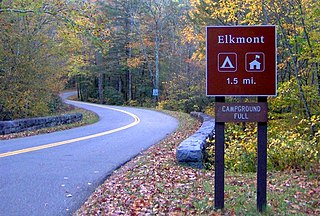
Elkmont is a region situated in the upper Little River Valley of the Great Smoky Mountains of Sevier County, in the U.S. state of Tennessee. Throughout its history, the valley has been home to a pioneer Appalachian community, a logging town, and a resort community. Today, Elkmont is home to a large campground, ranger station, and historic district maintained by the Great Smoky Mountains National Park.

Appalachian music is the music of the region of Appalachia in the Eastern United States. It is derived from various European and African influences, including English ballads, Irish and Scottish traditional music, hymns, and African-American blues. First recorded in the 1920s, Appalachian musicians were a key influence on the early development of Old-time music, country music, and bluegrass, and were an important part of the American folk music revival of the 1960s. Instruments typically used to perform Appalachian music include the banjo, American fiddle, fretted dulcimer, and guitar.

John Fox Jr. was an American journalist, novelist, and short story writer.

The Museum of Appalachia, located in Norris, Tennessee, 20 miles (32 km) north of Knoxville, is a living history museum that interprets the pioneer and early 20th-century period of the Southern Appalachian region of the United States. Recently named an Affiliate of the Smithsonian Institution, the museum is a collection of more than 30 historic buildings rescued from neglect and decay and gathered onto 63 acres (250,000 m2) of picturesque pastures and fields. The museum also preserves and displays thousands of authentic relics, maintains one of the nation's largest folk art collections, and hosts performances of traditional Appalachian music and annual demonstrations by hundreds of regional craftsmen.

The Trail of the Lonesome Pine is a 1908 romance novel/western novel written by John Fox, Jr. The novel became Fox's most successful, and was included among the top ten list of bestselling novels for 1908 and 1909. The novel has been adapted numerous times for both stage and screen.
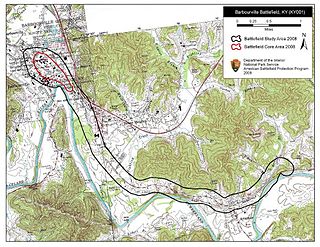
The Battle of Barbourville was one of the early engagements of the American Civil War. It took place on September 19, 1861, in Knox County, Kentucky during the campaign known as the Kentucky Confederate Offensive. The battle is considered the first Confederate victory in the commonwealth, and threw a scare into Federal commanders, who rushed troops to central Kentucky to try to repel the invasion, which was finally stopped at the Battle of Camp Wildcat in October.
This is a list of the National Register of Historic Places listings in Knox County, Tennessee.
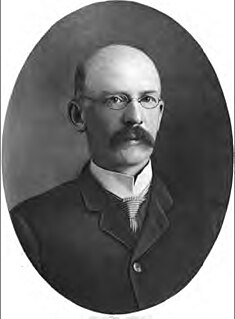
Joshua Fry Bullitt Jr. was a Virginia lawyer who practiced in Big Stone Gap, Virginia. He was one of the leading citizens of Southwest Virginia in the late 19th and early 20th centuries, both as a practicing lawyer and as a political figure. His prominence corresponded with the rise of the coal business in central Appalachia. His legacy includes both the continuation of the energy companies that he helped to create and the careers of the prominent legal figures who worked with and learned from him, just as he was the heir to a series of accomplished legal figures. As the leader of a citizen police force, he was the model for a character in one of the best-selling novels in the United States in the first half of the 20th century.
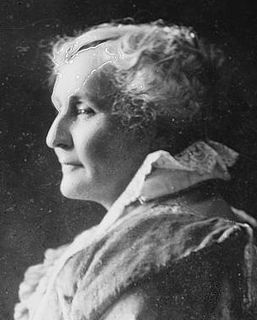
Kate Waller Barrett, née Katherine Harwood Waller, was a prominent Virginia physician, humanitarian, philanthropist, sociologist and social reformer, best known for her leadership of the National Florence Crittenton Mission, which she founded in 1895 with Charles Nelson Crittenton. Her causes included helping the "outcast woman, the mistreated prisoner, those lacking in educational and social opportunity, the voteless woman, and the disabled war veteran." Although comparatively little known today, she was "[o]ne of the most prominent women of her time".

The Knoxville Iron Company was an iron production and coal mining company that operated primarily in Knoxville, Tennessee, United States, and its vicinity, in the late 19th and 20th centuries. The company was Knoxville's first major post-Civil War manufacturing firm, and played a key role in bringing heavy industry and railroad facilities to the city. The company was also the first to conduct major coal mining operations in the lucrative coalfields of western Anderson County, and helped establish one of Knoxville's first residential neighborhoods, Mechanicsville, in the late 1860s.
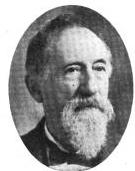
Edward Jackson Sanford was an American manufacturing tycoon and financier, active primarily in Knoxville, Tennessee, in the late 19th century. As president or vice president of two banks and more than a half-dozen companies, Sanford helped finance Knoxville's post-Civil War industrial boom, and was involved in nearly every major industry operating in the city during this period. Companies he led during his career included Sanford, Chamberlain and Albers, Mechanics' National Bank, Knoxville Woolen Mills, and the Coal Creek Coal Mining and Manufacturing Company.
Richard Franklin Graf (1863–1940) was an American architect active primarily in Knoxville, Tennessee and the vicinity in the early 20th century. His works include Stratford Mansion (1910), Sterchi Building (1921), St. John's Lutheran Church (1913), and the Journal Arcade (1924). His home, the Prairie School-inspired Graf House, is considered Knoxville's first modern home. Several buildings designed by Graf have been listed on the National Register of Historic Places.

"June Tolliver" House, also known as the June Tolliver House & Folk Art Center, is a historic home located at Big Stone Gap, Wise County, Virginia. It was built in 1890, and is a 2+1⁄2-story, three-bay Queen Anne-style brick dwelling. It has complex gable roof with projecting end bays. It is recognized as the house in which June Morris, the prototype of June Tolliver, heroine of John Fox, Jr.'s The Trail of the Lonesome Pine boarded when she came to school in Big Stone Gap. The house is open as a museum.
Daniel Davis Foute (1799–1865) was an American entrepreneur who did much to develop Cades Cove in Blount County, Tennessee, US. He built an iron forge, launched a resort hotel, and built various roads in the region. After siding with the Confederate side in the American Civil War (1861–65) he lost most of his fortune and died insolvent.
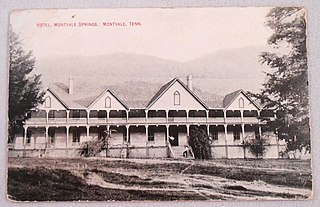
Montvale Springs is a location in Blount County, Tennessee, United States, that was once the site of a fashionable resort hotel, and is now a summer camp.

The Battle of Camp Wildcat was one of the early engagements of the American Civil War. It occurred October 21, 1861, in northern Laurel County, Kentucky during the campaign known as the Kentucky Confederate Offensive or Operations in Eastern Kentucky (1861). The battle is considered one of the first Union victories of the Civil War, and marked the second engagement of troops in the Commonwealth of Kentucky.

Memphis Tennessee Garrison was an activist for African Americans and young women during the Jim Crow Era in rural West Virginia. Garrison was a McDowell County teacher and community mediator, famous for organizing West Virginia's third chapter of the Gary Branch of the NAACP in 1921. Additionally, from 1931-1946, Garrison was the community mediator for U.S. Steel Gary Mines. Some of Garrison's other notable achievements range from establishing the Gary Branch of the National Association for the Advancement of Colored People, to organizing Girl Scout troops for African American girls, to creating a breakfast program from impoverished students during the Great Depression and finally to creating the "Negro Artist Series."





















